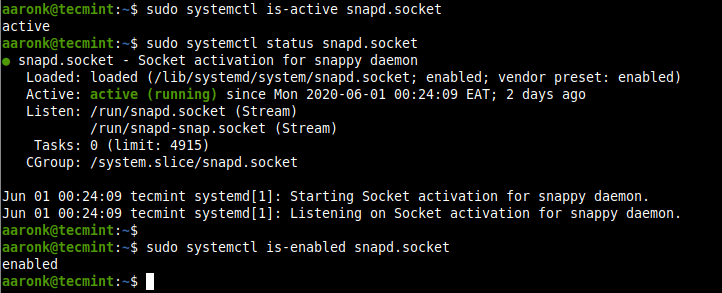
Now, run the system control and ln -s commands on the terminal shell to enable Snap and create a soft link.
#SNAP PACKAGE MANAGER INSTALL#
You can run the following Pacmancommand on your terminal shell to install Snap daemon on the system. But, Manjaro KDE also allows installing Snap through the Pacman command.

#SNAP PACKAGE MANAGER HOW TO#
Previously, I’ve shown how to install Snap on an Arch-based Linux system. Install Snap Package Manager on Manjaro System When the installation finishes, don’t forget to create a soft link of Snaps on your filesystem. You can directly run the following DNF command to install Snap on your Fedora Linux. The latest versions of Fedora Workstation don’t require the EPEL system to install Snap on the system. Install Snap Package Manager on Fedora Workstation You may now run the following YUM and system control commands to install Snap and create a soft link for Snap on your RHEL. First, run the following YUM command on the terminal shell to install EPEL. Installing Snaps on a Red Hat Linux requires EPEL (Extra Packages for Enterprise Linux) packages. Install Snap Package Manager on Red Hat Enterprise Then restart your system to enjoy the Snaps on your Arch distribution. cd snapdįinally, create a soft link of Snaps on your filesystem. Now, open the filesystem directory, and enable the Snap socket on your Arch system. First, run the following command to clone Snap from Github. If you have an Arch system, you can install Snaps on your machine by cloning the GitHub package. Install Snap Package Manager on Arch Linux
#SNAP PACKAGE MANAGER UPDATE#
Now, update your system repository and run the following aptitude command to install Snaps on Mint distribution. sudo mv /etc/apt/preferences.d/nosnap.pref ~ First, run the following move the nosnap.pref file on your Home directory from the etc directory. I’ve mentioned earlier that Linux Mint has disowned Snap for a very particular reason. Install Snap Package Manager on Linux Mint It’s recommended to execute commands as a root user for installing packages.įirst, update the aptitude package repository, then run the next apt command to install the Snap daemon tool on your Debian-based systems.

If you’re using a different Debian-based Linux system, you might need to execute the following commands to get started with the Snap daemon on your system. Don’t forget to run the commands as a root user. You can run the following aptitude commands on your terminal shell to update the Linux repository and install Snap on your machine. Install Snap Package Manager on Ubuntu/DebianĪs Canonical has made the Snap, installing Snaps on a Ubuntu or other Debian-based Linux system is hassle-free and straightforward. But no worries, in this post, I’ll also show how you can enable Snaps on your Linux Mint. As Mint turned off Snaps’ support, the conventional methods of enabling it would not work for Mint distribution.

However, as Linux uses various open-source applications, it’s not inconceivable that someday you might need to enable Snaps on Linux Mint to install a specific application that only is available on the Snap store. That’s why Linux Mint decided to dismiss Snaps on their system. Users were concerned, and some actually faced a few bad experiences through Snaps on the Mint distribution.

But, as Snaps use a central repository, mismatches might occur in the repository. No doubt Canonical made Snaps to make the process of installing applications convenient and hassle-free. What Happened Between Linux Mint And Snaps? In this post, we’ll see how to install Snaps on different Linux distributions. Snap maintains Snapd, a daemon for running programs on the system’s background, Snapcraft for contribution on the application store, and the Snap Store as a GUI-based application store. Snap is written in Go and C programming language and has the GPL privacy license. Sandbox has made Snaps easy and quick the loading time of applications is really faster on Snaps. It uses a central package repository to store packages and maintain the sandbox technology to install packages on a machine. Snap is available for almost all Linux distributions even you can deploy it for IoT development.


 0 kommentar(er)
0 kommentar(er)
